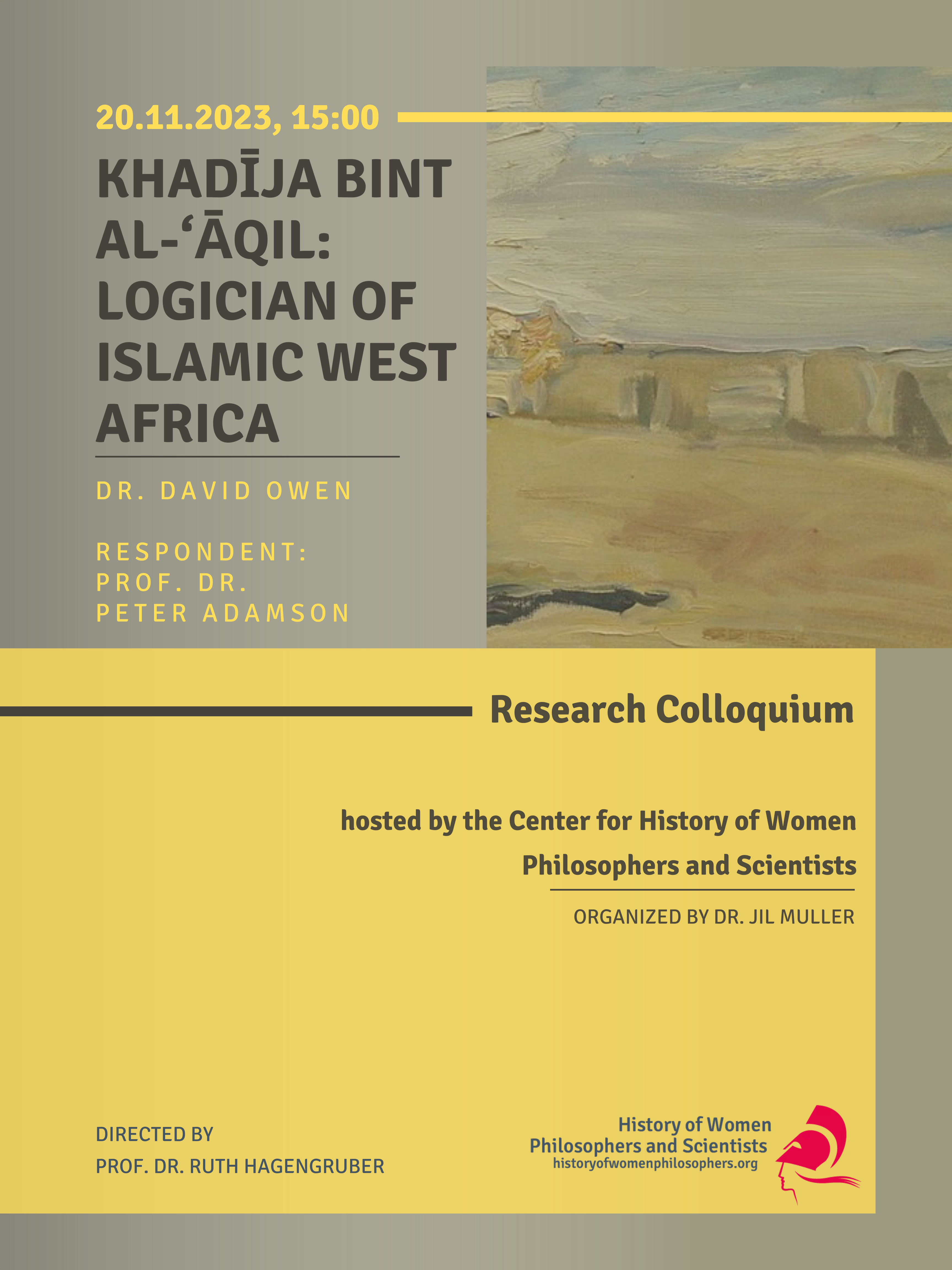Some highlights from David Owen’s talk
 David Owen’s talk focused on logical work by Ghadīja Mint al-Aquil, who wrote in Arabic in eighteenth-century Boutilimit (now part of Mauritania). Philosophy in Arabic from this period and area remains understudied, and this is especially true of Ghadīja. Her commentary on a logic text, which is still as yet only in manuscript form, appears to be the second-oldest fully extant logic work written by a woman. Furthermore, Owen argued for her influence in the region: before she wrote, we know of very few logic texts from the area, but many more exist afterwards. Moreover, she had at least three well-attested and influential students in logic, including Ibn Būna and Abdul Kader. And contemporary reports describe her as the most learned person in the area at the time, and a teacher not just of logic but of “all of the sciences.”
David Owen’s talk focused on logical work by Ghadīja Mint al-Aquil, who wrote in Arabic in eighteenth-century Boutilimit (now part of Mauritania). Philosophy in Arabic from this period and area remains understudied, and this is especially true of Ghadīja. Her commentary on a logic text, which is still as yet only in manuscript form, appears to be the second-oldest fully extant logic work written by a woman. Furthermore, Owen argued for her influence in the region: before she wrote, we know of very few logic texts from the area, but many more exist afterwards. Moreover, she had at least three well-attested and influential students in logic, including Ibn Būna and Abdul Kader. And contemporary reports describe her as the most learned person in the area at the time, and a teacher not just of logic but of “all of the sciences.”
Discussion following comments by Prof. Peter Adamson (LMU Munich) raised some questions about Ghadīja’s logical work that remain open for further research. One concerns her level of engagement with Eastern Islamic logical traditions, especially Avicennan modal logic. Ghadīja’s manuscript under discussion focuses on cases of theological reasoning by analogy, as well as reasoning in jurisprudence, rather than the complexities of modal logic. However, according to Owen, Ghadīja also wrote a more advanced work (which probably does not survive) that would have treated modal topics. A second question concerns differences between Ghadīja’s thought and that of other women writing nearby in the same period. Adamson raised the example of Nana Asma’o, who wrote mystical as well as highly politicized works. Owen pointed out, however, that Ghadīja and Asma’o belonged to the same legal and jurisprudential school, despite their differences in style.
You cannot copy content of this page








